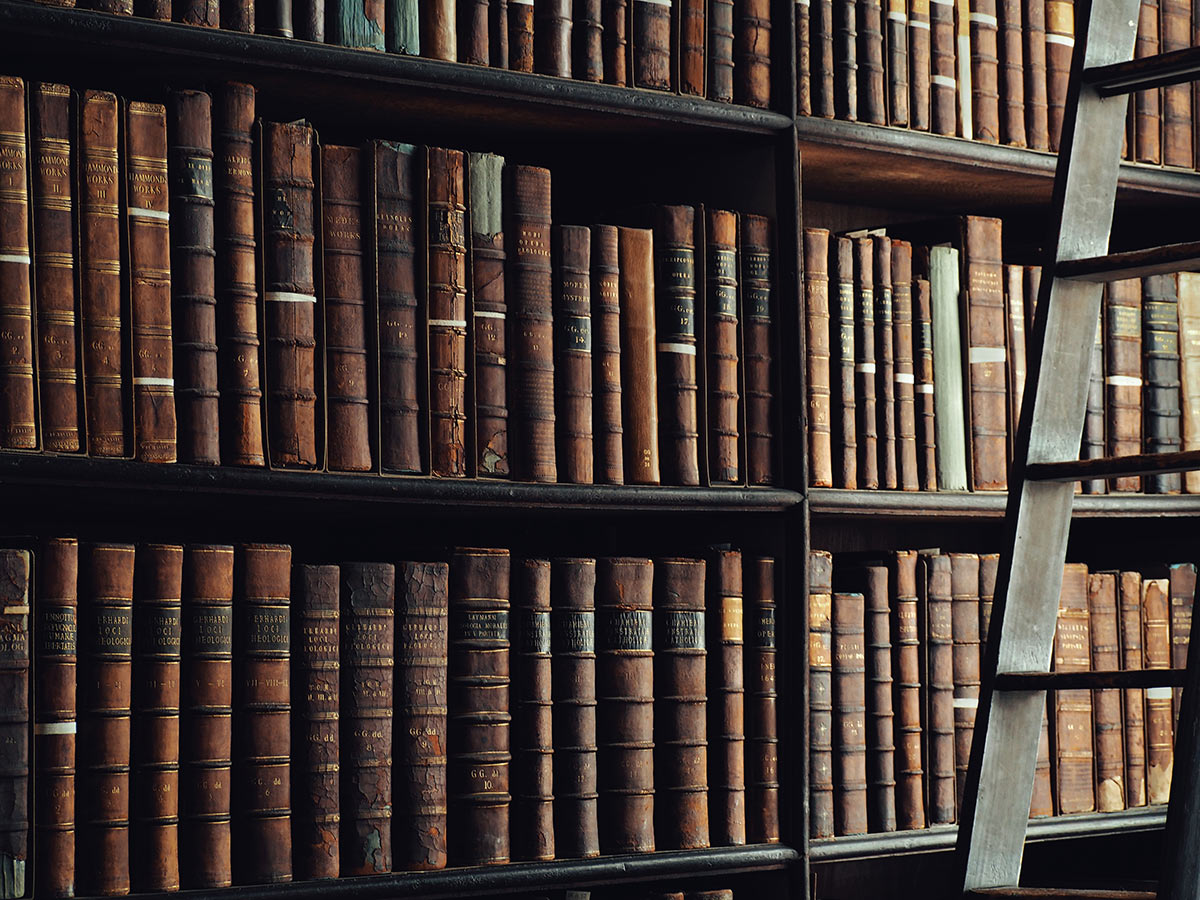The Domain of Queen Margot
 The Domain of Queen Margot, which today occupies the enclosure of the former Sulpician Solitude, is only a small part of the vast estate acquired by the former sovereign.
The Domain of Queen Margot, which today occupies the enclosure of the former Sulpician Solitude, is only a small part of the vast estate acquired by the former sovereign.
It was in 1606 that Marguerite de Valois, first wife of King Henri IV, first sought refuge in the village of Issy as she tried to escape a plague epidemic in Paris. At the time, the estate belonged to the king's goldsmith, Jean de La Haye, who eventually relinquished his home to her.
Once the sale was completed, Queen Marguerite decided to carry out work and enlarge her estate, also acquiring the former Château d'Issy, of which all that remains is an entrance pavilion, now occupied by the French Playing Card Museum.
On May 14, 1610, just as Marguerite de Valois was about to inaugurate the new facilities for her 57th birthday, she received news that her ex-husband, King Henri IV, had been assassinated in Paris on rue de la Ferronnerie.
Marguerite immediately joined Queen Marie de Médicis and the Dauphin, the future King Louis XIII, in the Louvre to console them for their tragic loss. A few days later, Marguerite de Valois gave a sumptuous reception in their honor at her renovated estate in Issy.
After the death of Queen Margot (1615), the estate was divided up and bought in 1618 by Michel Sarrus, a member of the Paris Parliament. The estate was reduced to the main house, its flowerbeds and park.
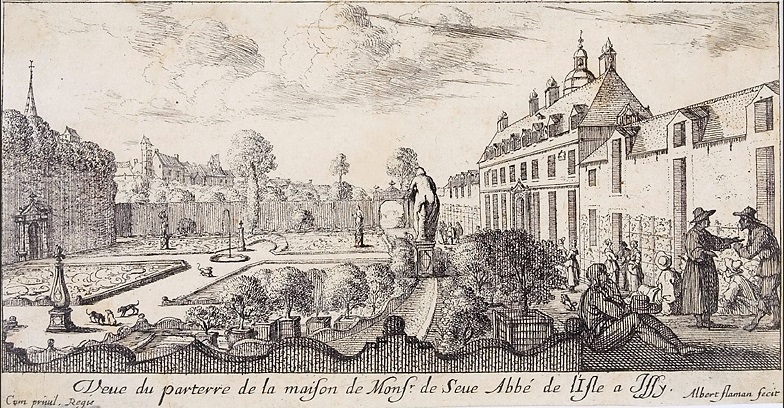 Engraving of the residence of Abbé Antoine de Sève
Engraving of the residence of Abbé Antoine de Sève
In 1640, Michel Sarrus' widowed wife, in turn, sold the estate to an ecclesiastic known as Antoine de Sève, chaplain to King Louis XIII and commendatory abbot of Lisle-en-Barrois.
This marked the beginning of a period in which the Abbé's residence was home to a succession of prelates and churchmen, including the young priest Jean-Jacques Olier, who the following year (1641) founded one of France's first seminaries for the training of the "new generation" of Cathlic clergy.
The seminary that Jean-Jacques Olier had built opposite the Church of Saint Sulpice in Paris, of which he became the pastor in 1642, was a great success, attracting many students.
Among the seminary's first students was the illustrious Alexandre Le Ragois de Bretonvilliers, who bought the Issy estate from Antoine de Sève in 1655, before taking over leadership of the Society of Saint Sulpice himself on the death of Father Olier (1657).
The Issy estate was then used as a vacation and resting place for the "Messieurs de Saint-Sulpice" and their seminarians.
The former Queen Margot estate thus became the country house of the Seminary of Saint Sulpice in Paris, and it was in a wing of this residence that the Solitude was first housed in 1676, following the election of Louis Tronson as the Society's 3rd Superior General. Tronson was none other than the nephew of Antoine de Sève, former occupant of the premises.
A true Sulpician institution, the Solitude formation program resembled a novitiate where future members of Saint Sulpice were trained. It was experienced as a time of spiritual retreat, during which the Solitaires withdrew to this "interior seminary" where they prepared for the demands of priestly training and the specific characteristics of Sulpician pedagogy, in terms of teaching and spiritual direction.
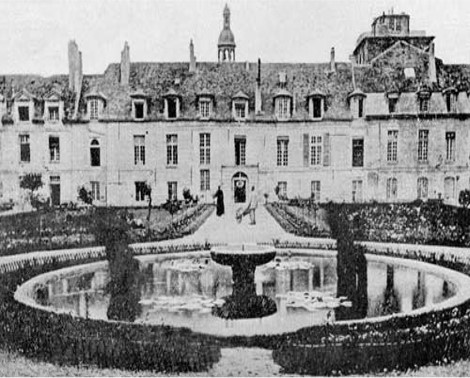 Former residence of Marguerite de Valois, no longer in existence, which became the property of Saint Sulpice in 1655 – photograph from ca. 1860
Former residence of Marguerite de Valois, no longer in existence, which became the property of Saint Sulpice in 1655 – photograph from ca. 1860
The Seminary of Saint Sulpice enjoyed rapid success in the capital and became a model for the many diocesan seminaries that began to open throughout the Kingdom, inspired by it. Indeed, it was not uncommon for bishops to call on the Sulpicians to take charge of these provincial seminaries.
The current Solitude enclosure, renamed "Domaine de la Reine Margot" in 2019, actually corresponds to a plot of land purchased by the Sulpicians in 1715, overlooking rue de la Glaisière (now rue Minard). The two buildings adjoined the gardens of Saint-Etienne Church, near the Impasse du Cloquet, on the highest point of the old village of Issy.
Saint Sulpice then decided to allocate the use of the property to the "Philosophy Students” [Communauté des Philosophes], founded earlier in 1687 within the Paris Seminary itself, to provide its members with a "country house." The "Theologians" of the Paris Seminary, for their part, used the former home of Marguerite de Valois as an R&R house for their weekly and summer vacations.
At the time of the French Revolution, the entire Sulpician estate was seized and divided into four lots: the former home of Marguerite de Valois, the flower garden and its pond, the former kitchen garden, and finally the chapel of Lorette and its large park. These various plots were sold to private individuals as national property in 1792.
Jacques André Émery, Superior General of Saint-Sulpice, a contemporary of the troubles of the Revolution, was later able to buy back each of these plots one by one, with the exception of the former country house of the Philosophers, which was bought back by his successor in 1818.
It was at this point that the former Philosophers’ country house was reallocated to the Solitude novitiate, as the large Issy mansion was to house some of the students from the Paris Seminary, which had been demolished in 1803 to make way for the construction of today's Place Saint-Sulpice.
On November 21, 1819, the new Solitaires entered the new building, joining the ranks of the Society of the Priests of Saint Sulpice.
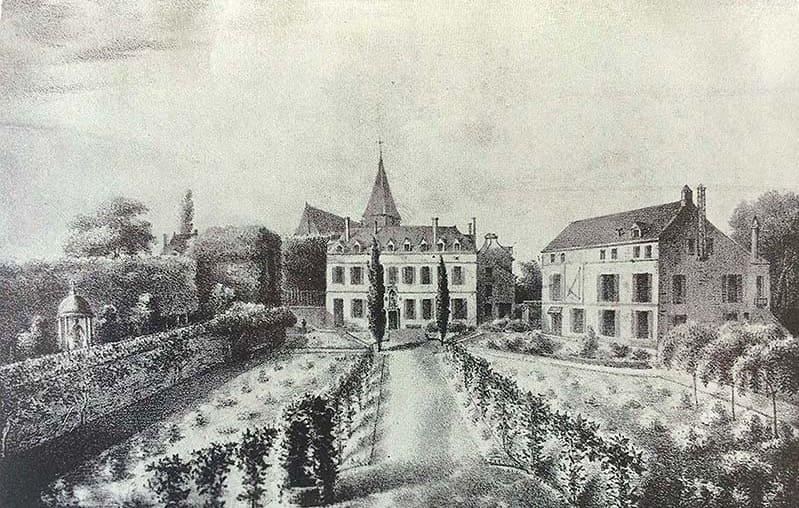 Lithograph of the former Solitude (1826) before the construction in 1842-1843
Lithograph of the former Solitude (1826) before the construction in 1842-1843
In 1829, a statue of founder Jean-Jacques Olier was added to the Solitude gardens. A statue of the "Virgin of the Solitaries" carrying the Infant Jesus in her arms was also installed.
In 1842, Étienne-Michel Faillon [1799-1870], then director of the Solitude, undertook extensive renovations that gave the buildings their present-day appearance.
To carry out his architectural project, Father Faillon decided to demolish one of the two main buildings at the Solitude, keeping only one. The remaining building served as the starting point for his construction project. He recovered the attic space, which he raised to create a fully-fledged living floor, topped by a new roof. Drawing up plans for the new building, he decided to give it the U-shaped layout we can still admire today.
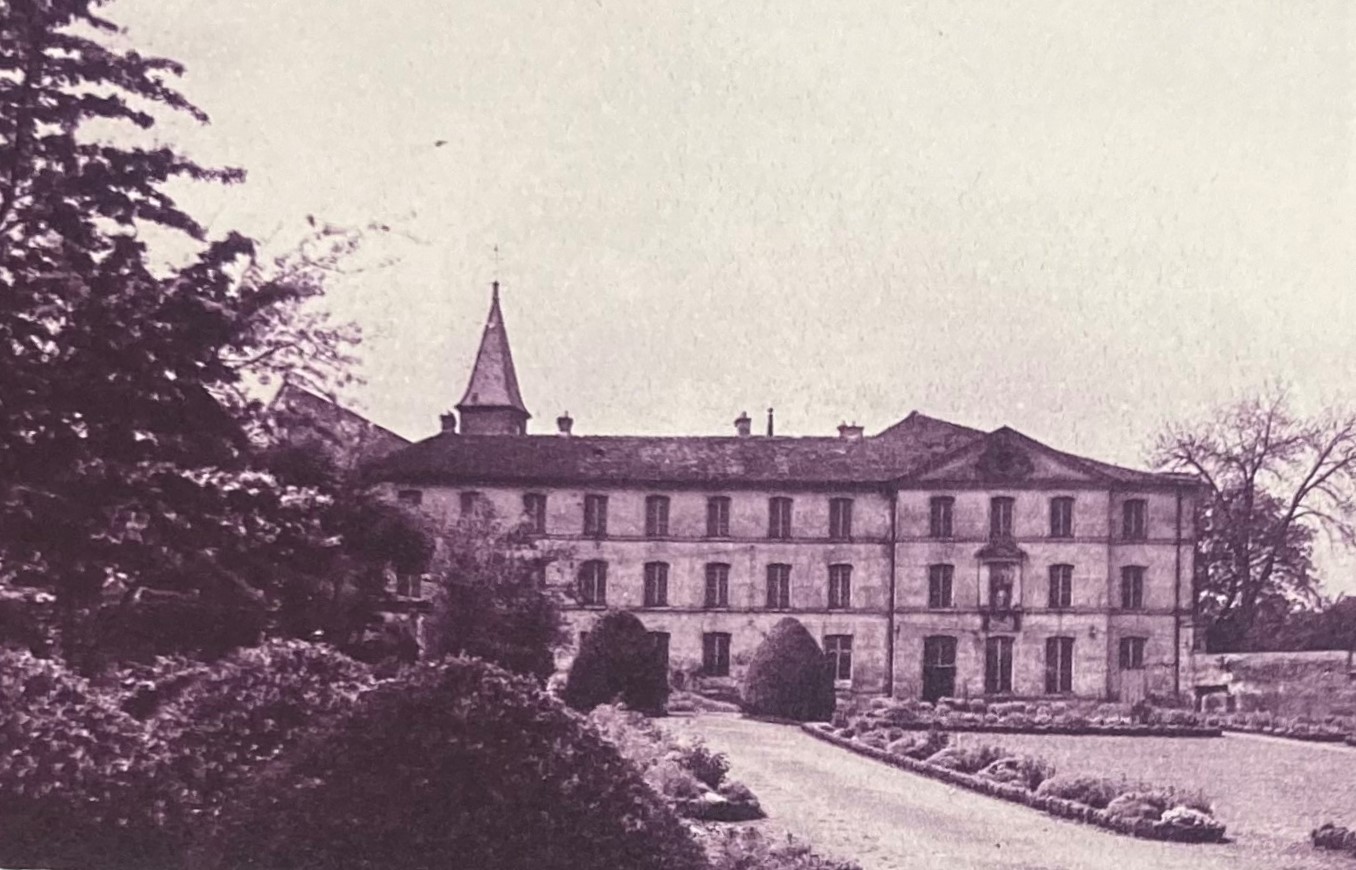 Post card of the current Solitude residence – beginning of 20th century
Post card of the current Solitude residence – beginning of 20th century
A good historian and art lover, Father Faillon conceptualized the neo-Gothic style of the Chapel of the Solitaires, for which he designed and conceived each of the artistic motifs and other architectural elements.
Construction terminated the following year, permitting the new Solitaires that year to enter their program on November 21, 1843. The chapel, now designated a historic monument, was not completed and inaugurated until a little later, in June 1846. The architect and foreman was Father Faillon.
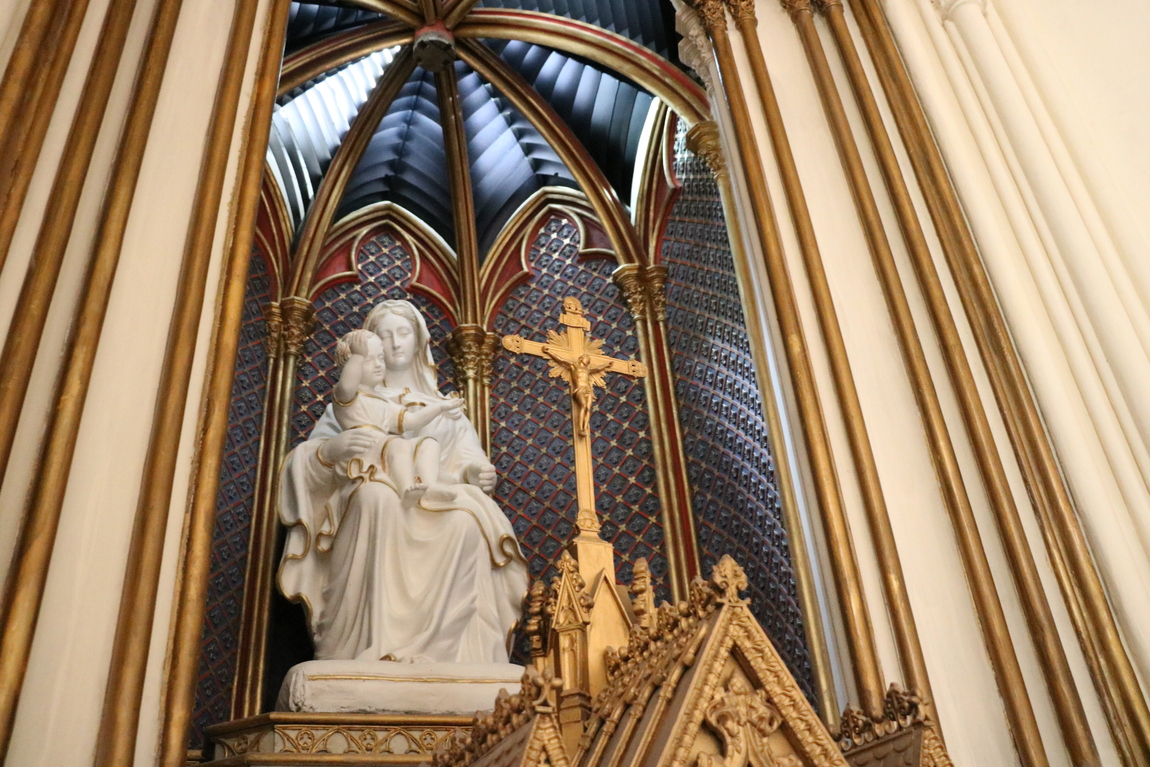 The apse of the Solitude Chapel, renovated in 2022
The apse of the Solitude Chapel, renovated in 2022
In early 1871, the Franco-Prussian War ended with a French military failure, leading to the fall of the Second Empire. Adolphe Thiers' provisional government sought to negotiate terms of surrender with Prussia when the Paris Commune insurrection broke out. Issy was occupied by the insurgents until May 1871, when the French army, retreating to Versailles, succeeded in retaking the village of Issy from the Communards. The Sulpicians' estate, which lay at the heart of the confrontation zone, never fully recovered. The chapel of Lorette, built in 1680, was destroyed, while the former home of Marguerite de Valois was so ravaged that it was demolished and rebuilt from scratch between 1878 and 1892.
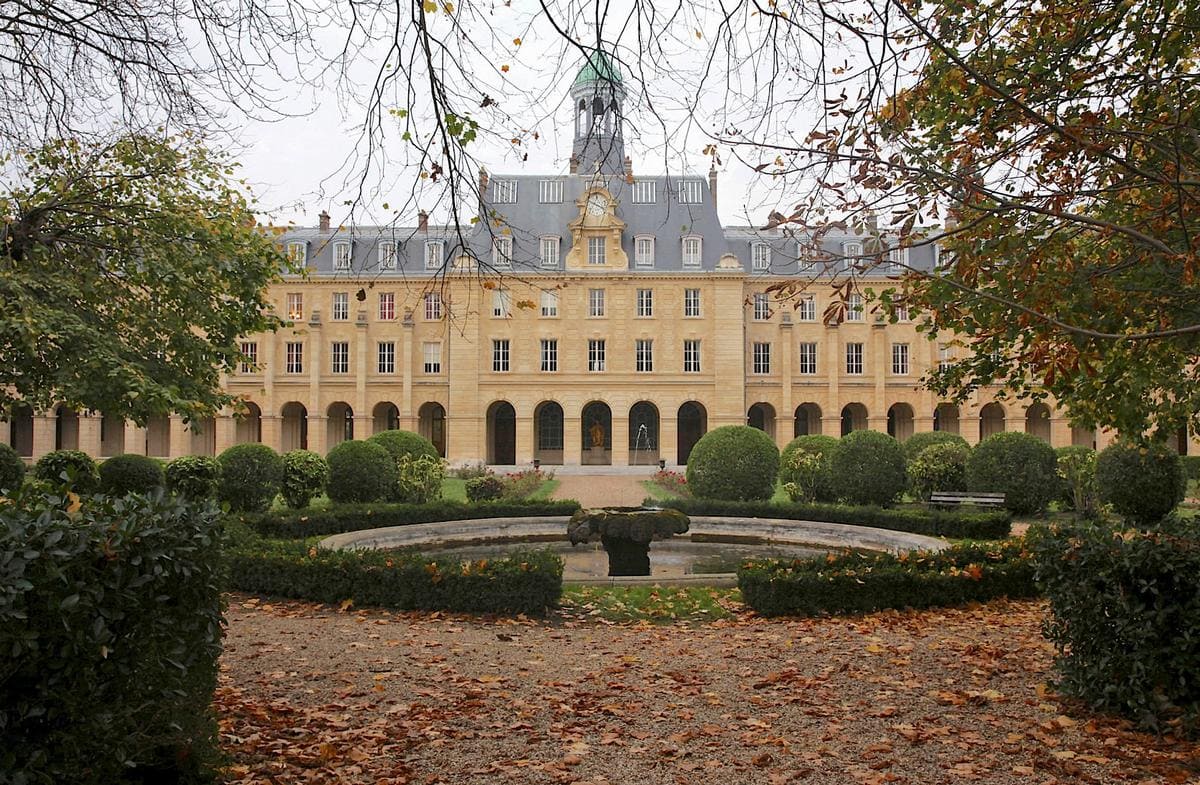 The new Seminary of Saint Sulpice built in 1892
The new Seminary of Saint Sulpice built in 1892
Only the Solitude estate escaped destruction. The only damage was a few shell holes in the roofs. Damaged walls were filled in with plaster of Paris to accommodate the new Solitaires of 1871. Bomb debris was melted down to make the base of a statue in honor of the Virgin Mary, known as “Our Lady of the Bombs” [Notre-Dame des bombes].
From 1872 to 1874, the chapel's damaged stained-glass windows were restored, as were the statue of Father Olier, the throne of the Virgin of the Solitaires, and the Covered Grotto [Grotte-Abri], which became a small oratory dedicated to the Holy Family.
In 1895, a veranda or marquise was installed in the inner courtyard along the three wings to shelter the Solitaires in rainy weather.
The Solitude, which has undergone many changes throughout its history, changed its use for the last time in 1971, becoming a home for retired Sulpicians of the French Province.
Today, the Solitaires of the Provinces of France and Canada are sent to Oka, near Montreal, Canada to experience their Solitude.
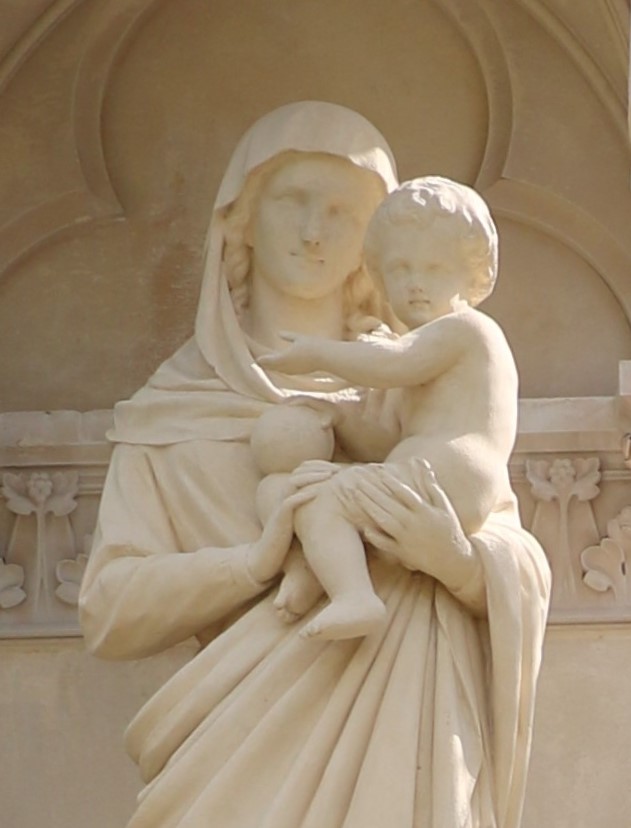
M. Zakaria HILAL, Archivist of the Society of the Priests of Saint Sulpice
Translated by Rev. Ronald D. WITHERUP, PSS


